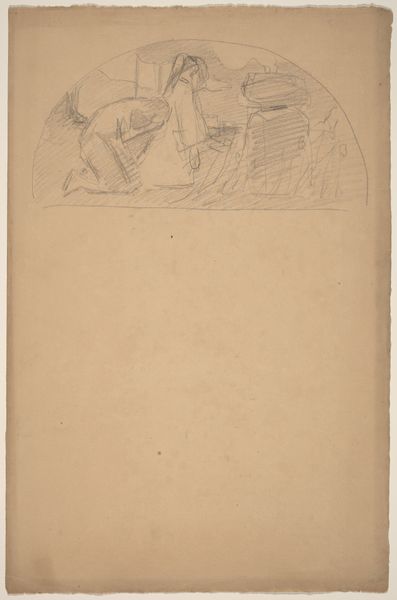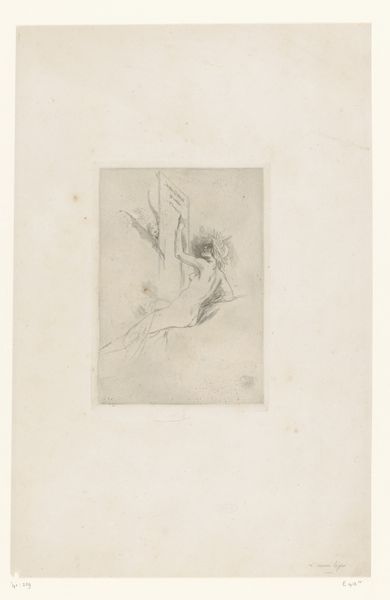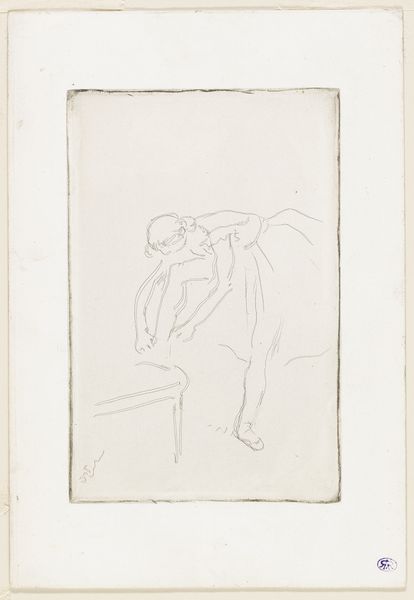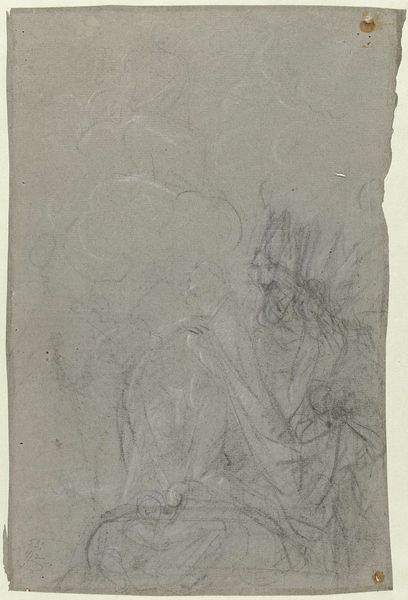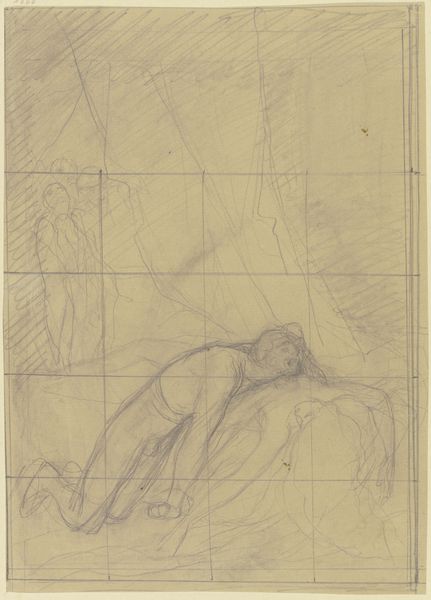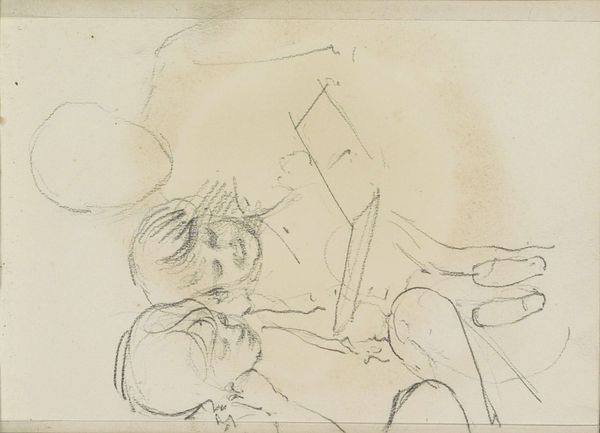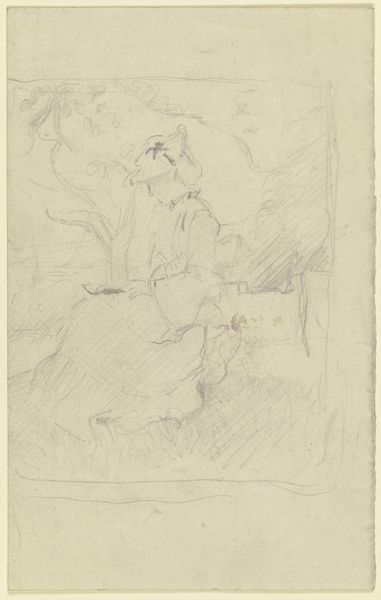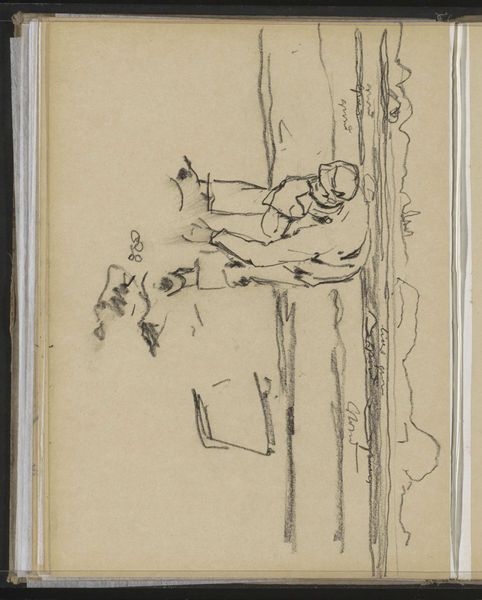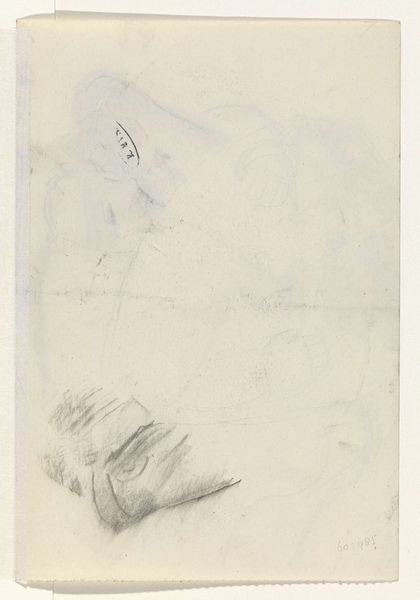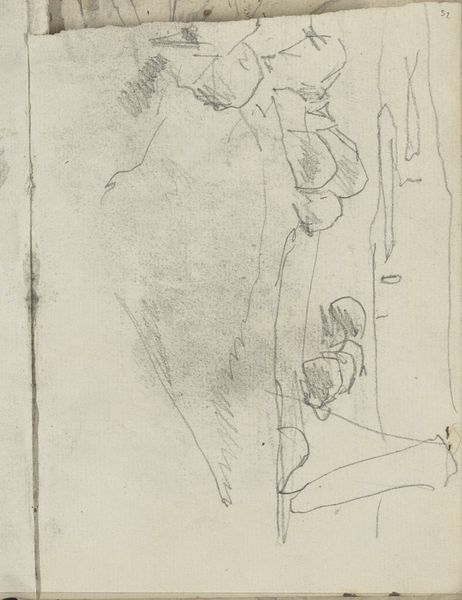
drawing, pencil
#
drawing
#
landscape
#
figuration
#
romanticism
#
pencil
#
academic-art
Dimensions: height 145 mm, width 92 mm
Copyright: Rijks Museum: Open Domain
Editor: We are looking at "Aurora (after Boucher)," a pencil drawing made before 1825, currently at the Rijksmuseum. It seems quite ethereal, a quick sketch capturing a goddess-like figure. What’s your interpretation of this piece? Curator: Given its title "after Boucher", this piece points to an interesting dialogue between artists and their engagement with established visual vocabularies. We see echoes of Boucher's rococo style – the light touch, the focus on mythology. What might the act of copying or interpreting Boucher signify in the context of art institutions and artistic training of the time? Editor: That's an interesting angle! I was simply considering it as a study, but your interpretation encourages us to investigate how the artistic tradition and its academic reproduction were essential during that time. Curator: Precisely! Consider the role academies played. They legitimized artistic styles, canonized certain masters like Boucher, and thus heavily shaped artistic careers. What kind of statement does a piece like this make in the development and professional affirmation of its author? Editor: So, instead of seeing it solely as a sketch, we should look at it as an engagement – even a negotiation – with artistic power structures of the time. Perhaps trying to master the aesthetic norms. Curator: Exactly! It reflects an engagement with dominant narratives in the artistic sphere, with a recognized master of the canon, but also how an author inserts themself into the politicized world of imagery. Editor: I had never thought about a sketch in that context! Thanks! Curator: Glad I could share a fresh perspective! It's essential to see how social forces shape art’s journey through time.
Comments
No comments
Be the first to comment and join the conversation on the ultimate creative platform.
